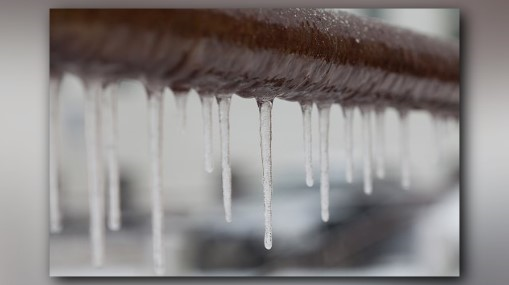This post further down in relation to Prevent Frozen Pipes is truly stimulating. Read it yourself and see what you think about it.

Cold weather can ruin your plumbing, specifically by freezing pipes. Right here's how to prevent it from occurring and what to do if it does.
Intro
As temperatures decline, the risk of frozen pipelines rises, potentially causing costly repairs and water damages. Understanding how to avoid icy pipelines is critical for property owners in chilly climates.
Comprehending Frozen Pipelines
What creates pipes to ice up?
Pipes freeze when exposed to temperature levels below 32 ° F (0 ° C) for expanded periods. As water inside the pipes ices up, it expands, taxing the pipe walls and possibly creating them to break.
Dangers and damages
Frozen pipelines can lead to water supply disruptions, home damage, and pricey fixings. Burst pipelines can flood homes and cause substantial structural damage.
Indicators of Frozen Pipeline
Recognizing frozen pipelines early can prevent them from rupturing.
How to determine icy pipes
Seek reduced water circulation from taps, unusual odors or sounds from pipelines, and visible frost on exposed pipelines.
Avoidance Tips
Protecting at risk pipelines
Wrap pipes in insulation sleeves or utilize heat tape to protect them from freezing temperatures. Focus on pipes in unheated or exterior areas of the home.
Heating techniques
Keep indoor areas adequately heated, particularly areas with plumbing. Open cupboard doors to enable warm air to circulate around pipelines under sinks.
Shielding Outside Pipes
Garden hose pipes and outside faucets
Detach and drain pipes yard tubes before winter season. Mount frost-proof faucets or cover exterior taps with protected caps.
What to Do If Your Pipes Freeze
Immediate actions to take
If you think icy pipelines, keep faucets available to relieve pressure as the ice thaws. Make use of a hairdryer or towels taken in warm water to thaw pipelines gradually.
Long-Term Solutions
Structural modifications
Think about rerouting pipes away from exterior wall surfaces or unheated areas. Add extra insulation to attic rooms, cellars, and crawl spaces.
Upgrading insulation
Invest in top quality insulation for pipelines, attic rooms, and wall surfaces. Appropriate insulation aids maintain regular temperature levels and minimizes the threat of icy pipelines.
Final thought
Protecting against icy pipes calls for proactive steps and quick actions. By understanding the reasons, indications, and safety nets, house owners can safeguard their pipes throughout winter.
6 Proven Ways to Prevent Frozen Pipes and Protect Your Home
Disconnect and Drain Garden Hoses
Before winter arrives, start by disconnecting your garden hoses and draining any remaining water. Close the shut-off valves that supply outdoor hose bibs and leave the outdoor faucet open to allow any residual water to drain. For extra protection, consider using faucet covers throughout the colder months. It’s also important to drain water from any sprinkler supply lines following the manufacturer’s directions.
Insulate Exposed Pipes
Insulating your pipes is an effective way to prevent freezing. Pipe insulation is readily available at home improvement stores and is relatively inexpensive. Pay close attention to pipes in unheated areas such as the attic, basement, crawl spaces, or garage. Apply foam insulation generously to create a buffer against the cold. You can also wrap your pipes in heat tape or thermostat-controlled heat cables for added warmth.
Seal Air Leaks
Inspect your home for any cracks or openings that could let in cold air. Seal any holes around the piping in interior or exterior walls, as well as the sill plates where your home rests on its foundation. Additionally, make sure to keep your garage door closed unless you’re entering or exiting. Leaving it open creates a significant air leak that can lead to frozen pipes.
Allow Warm Air Circulation
During cold snaps, it’s essential to allow warm air to circulate evenly throughout your home. Leave interior doors ajar to promote better airflow. Open kitchen and bathroom cabinets to help distribute heat consistently around the rooms. If you have small children or pets, be sure to remove any household chemicals or potentially harmful cleaners from open cabinets for safety.
Let Faucets Drip
A small trickle of water can make a big difference in preventing ice formation inside your pipes. When temperatures drop significantly, start a drip of water from all faucets served by exposed pipes. This continuous flow helps prevent the water from freezing. Additionally, running a few faucets slightly can relieve pressure inside the pipes, reducing the chances of a rupture if the water inside does freeze.
https://choateshvac.com/6-proven-ways-to-prevent-frozen-pipes-and-protect-your-home/

Do you enjoy reading about Helpful Tips to Prevent Frozen Pipes this Winter? Place feedback further down. We will be pleased to see your thoughts about this content. Hoping that you visit us again later on. Sharing is good. Helping people is fun. We appreciate reading our article about How to prepare your home plumbing for winter weather.
Visit Our Site